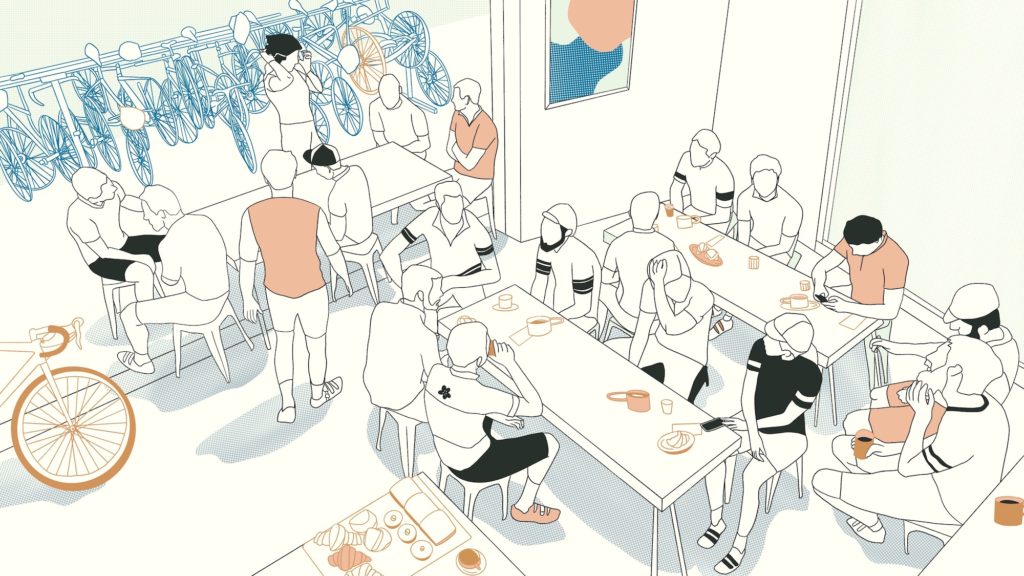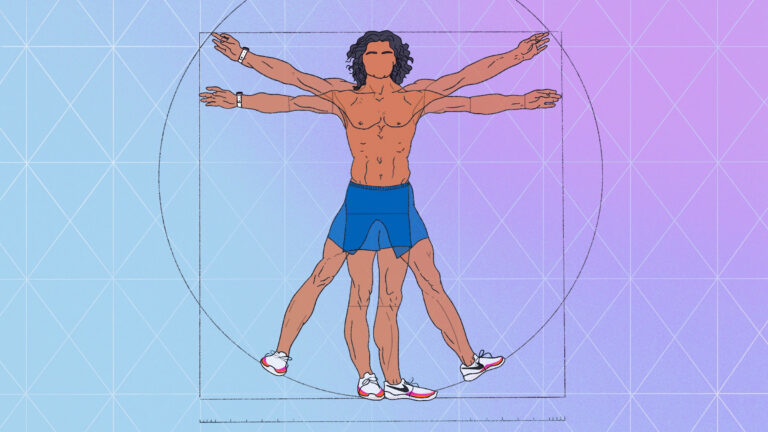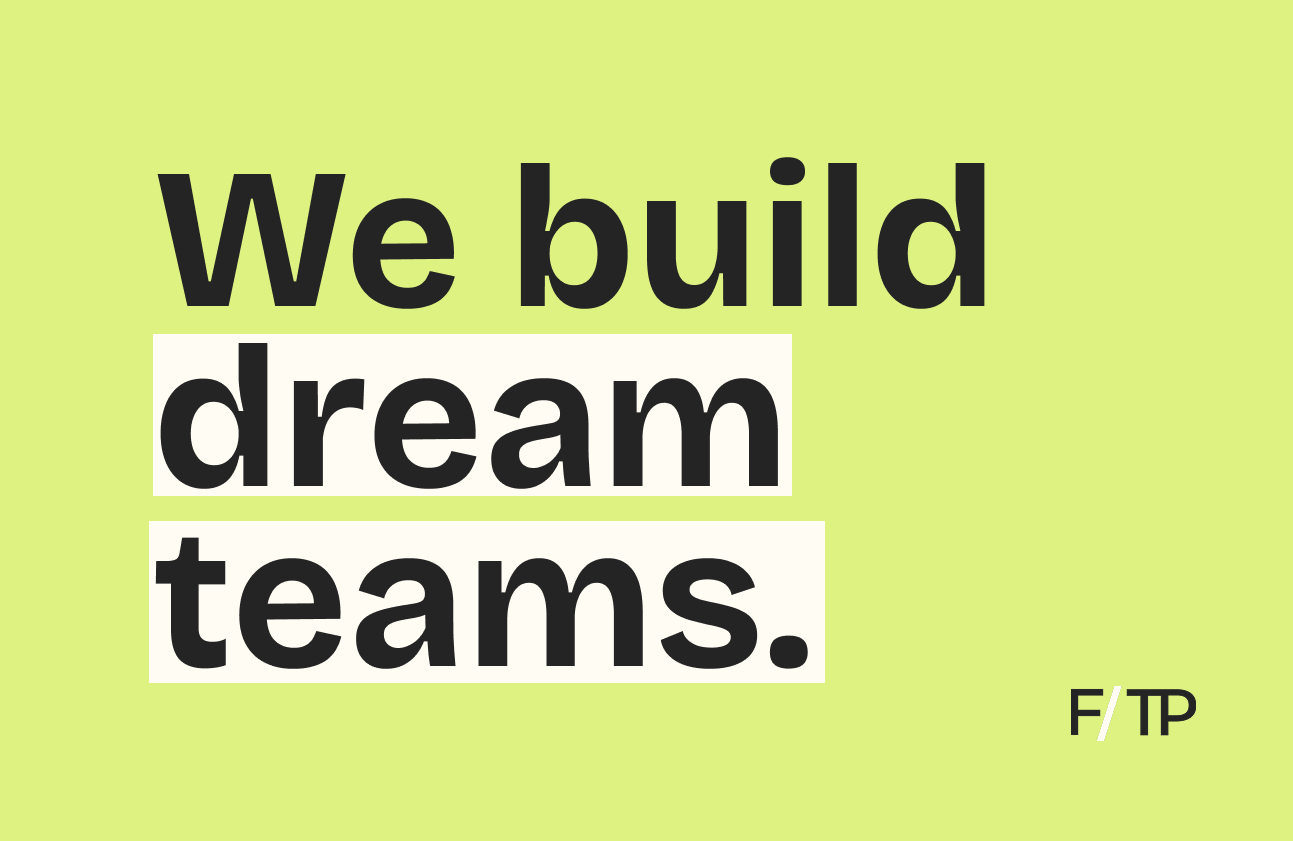Community is easy to say, hard to define, and even more difficult to build.
While the power of community is undeniable, explanations that expand upon “I know it when I see it” are in short supply.
At a time when assembling in real life is restricted and virtual connections sustain us, it’s worth exploring the meaning of community in the context of our newfound reality.
Sweat & Socialize
In business, community can be a cheat code. And in fitness circles, it’s the holy grail.
Sweating together offers benefits that go beyond socializing. Multiple studies point to the power of community as it relates to fitness.
- Overweight individuals lose more weight when they spend time with fit friends.
- People who work out with friends enjoy exercise more than those who sweat alone.
- Working out with a partner significantly increases time spent exercising and performance.
A shining example, with community at their core, boutique studios boomed. Accelerating the growth of the broader fitness industry, boutique memberships surged 121% between 2013 and 2017, compared with 15% for traditional gyms.
Similarly, it was community that transformed CrossFit from a workout protocol into a fitness phenomenon. Fueled by word-of-mouth, one gym has spawned 15K CrossFit affiliates, 4M members, and 175K coaches.
Going a step further, sweating together has become a religion. This sentiment is best represented in How We Gather, a 2015 Harvard Divinity School study.
While exploring religious identity in a secular age, researchers uncovered the power of collective sweat: “People come because they want to lose weight or gain muscle strength, but they stay for the community… It’s really the relationships that keep them coming back.”
But, even in a world where sweating together is strictly prohibited, fitness communities are evolving, forcing us to question the constructs of community in the first place.
Come Together
For most of human history, the notion of community was tied to a physical location.
- Community: a unified body of individuals, such as the people with common interests living in a particular area. (Merriam-Webster)
Derived from one’s literal place in the world, neighborhoods, churches, universities, and countries of origin defined us. But in recent decades, something changed.
In The Big Sort, author Bill Bishop explains: “It used to be that people were born as part of a community, and had to find their place as individuals. Now people are born as individuals, and have to find their community.”
Precipitated by declining participation in civic organizations and increased distrust of institutions, community is increasingly something we choose. And, with the entire [digital] world at our fingertips, place is no longer a limiting factor. As a result, online communities are thriving. Likewise, absent a pandemic, in-person communities are treasured.
Recognizing this fact, brands have been quick to seize the opportunity.
- Brand community: a group of ardent consumers organized around the lifestyle, activities, and ethos of the brand. (Harvard Business Review)
A buzzword to some and bellwether to others, community-building is the new social media. While some brands pay lip service to the idea, others engineer their organization around the concept — so much so that, in some instances, the community predates the business itself.
More than a marketing tactic, building community is a business strategy and, when successfully executed, a competitive advantage.
Creating a self-perpetuating flywheel, community members spread the good word, lowering acquisition costs. As brand affinity grows, retention and lifetime value rise along with it. Better still, community members are apt to support one another, creating powerful—and in some cases, viral—network effects.
Easier said than done, community members are often confused with followers, users, subscribers, and customers. While the latter are passive and transient, the former are passionately engaged in a give-and-take with the brand and other members of the community.
Said differently, communities aren’t built for people; they’re built with them.
Community Case Studies
The quintessential case study in community, the aptly named H.O.G., or the Harley Owners Group, helped transform the motorcycle brand into a billion-dollar business. Today, there are more than 1,400 H.O.G. chapters.
Turning our attention to brands that empower people to sweat, here are how standout communities come together, online and in real life, to form thriving subcultures.
Rapha. Premium cycling company Rapha has built a global lifestyle brand through community. In addition to content and events, the company boasts 23 physical Clubhouses that play host to the Rapha Cycling Club. With more than 13K cyclists on its RCC app, the brand’s community bridges digital and physical worlds.
Tracksmith. Rooted in storytelling and running culture, Tracksmith’s authenticity and attention to detail stand out. As Tracksmith CEO Matt Taylor told us on the Fitt Insider podcast, connecting with runners at the Trackhouse, the company’s retail store and community hub, has been integral to the apparel brand’s success.
Strava. With 70M members, Strava’s global athlete community is thriving. And, as Strava co-founder Mark Gainey shared on the Fitt Insider podcast, community has played a pivotal role. The key, by his telling, is getting people to interact with one another. So, unlike other online communities or fitness apps, Strava is a conduit to sweating with others in real life.
YMCA. Founded in 1844, few organizations have had the kind of real, on-the-ground impact as the YMCA. Increasingly aimed at serving young people, some 64M people in 120 countries are beneficiaries of the YMCA’s offerings annually. From healthy living to youth sports and social responsibility, The Y could serve as a blueprint for community wellness post-COVID.
lululemon. Heralded for its local ambassador program, lulu has long been a proponent of living the “Sweat Life.” From in-store workouts to the annual SeaWheeze Half Marathon, the activewear brand knows how to foster community. But now, with the $500M acquisition of Mirror, the company will flex its community-building muscle, hoping to reimagine the idea of sweating together.
Peloton. From its leaderboard to profile tags, digital high-fives, and a host of community-centric features, Peloton is cultivating connection. The company’s official member page on Facebook is filled with brand evangelists. And the community has taken it upon themselves to start subreddits, Instagram accounts, and informal member groups. More impressive, riders are known to make a pilgrimage to the Peloton’s NYC studio, signaling their commitment to the brand.
Looking Ahead
How we engage with others is constantly evolving. And our perception of community will continue to shift. But one thing’s for sure: When the world reopens, community will dictate behavior more than ever.
Searching for a sense of belonging, and meaningfully participating in the relationship, consumers won’t merely be limited by a monetary budget. Instead, they’ll make decisions based on their community bandwidth, where winning brands seek to capture an outsized portion of our time, attention, and spending.
🎙On The Podcast
This week on the Fitt Insider podcast, we’re joined by Nick Green, CEO of Thrive Market.
Founded in 2014, Thrive Market bills itself as “Costco meets Whole Foods.” By charging an annual membership, the online marketplace is able to offer natural and organic products at a discount.
In this episode, we discuss:
- the importance of increasing access to healthy, high-quality foods
- raising $250M after getting turned down by countless investors
- how Thrive approaches curating its marketplace and selecting brands
- Why Nick believes the company is just getting started
Listen to the full episode here.
📵 Disconnected Fitness
Under Armour is selling MyFitnessPal to Francisco Partners for $345M. In related news, the company will shutter Endomondo, another one of its social fitness platforms.
How we got here: In 2015, Under Armour paid $475M for MyFitnessPal and another $85M for Endomondo. Two years earlier, Under Armour forked over $150M for MapMyFitness.
At the time, Under Armour CEO Kevin Plank said, “Data is the new oil” when explaining the company’s focus on fitness apps and hopes of building a data-driven ecosystem.
Right idea, wrong execution. Utilizing digital platforms as a means of building a larger, a more engaged community has paid dividends for retailers like Nike and lululemon. But Under Armour missed the mark.
Although the company describes its core user as “the Focused Performer,” it spent hundreds of millions of dollars to acquire platforms tailor-made for first-time or casual exercisers. Despite the fact that MyFitnessPal has amassed 200M users—up from 80M in 2015—Under Armour failed to create a unified social experience or centralized fitness hub tied to its retail business.
Now, as successful digital fitness platforms boom, and the category attracts new entrants like Apple, Under Armour has elected to cut its losses, selling MyFitnessPal for a steep discount.
Fitness apps aside, Under Armour has bigger issues to confront. Since 2016, growth has slowed. Heading into 2021, the company is retooling operations to prioritize direct-to-consumer sales.
🦄 Unicorn Status
ICYMI: WHOOP raised $100M in funding at a $1.2B valuation.
Led by IVP, the round included participation from a number of prominent athlete-investors, including: Patrick Mahomes, Kevin Durant, Eli Manning, and Larry Fitzgerald.
Perfectly positioned for the rise of recovery, WHOOP’s focus on human optimization has propelled it into the billion-dollar unicorn club.
The recovery score: Instead of focusing on steps taken or calories burned, WHOOP helps users answer the question “how recovered are you, and are you ready to perform today?”
The company’s wrist-worn device collects 100 measurements per second. More than a heart rate alone, WHOOP analyzes average heart rate, resting heart rate, and heart rate variability. Factoring sleep into the equation, the device also tracks sleep quality, latency, and efficiency.
From the source: As WHOOP CEO Will Ahmed told us on the Fitt Insider podcast, the company was born out of his interest in “training optimally, recovery, sleep, and injury prevention.”
In Ahmed’s opinion, WHOOP is uniquely positioned in the wearables market:
“WHOOP is unique in that it’s designed to live a step ahead of you.
If your recovery score is high, you can take on more strain. If you have a low recovery, it tells you to take on less strain. And at the end of the day, we look at the strain you’ve accumulated and we tell you how much sleep to recover. Then you wake up with a new recovery score.
In that way, the cycle is quite powerful and pretty different from other products on the market.”
📰 News & Notes
- Peloton’s seed round deck.
- An oral history of the StairMaster.
- WHOOP was originally called bobo.
- Ty Haney on what went wrong at Outdoor Voices.
- Eight Sleep’s latest launch makes your dumb mattress cool.
- The pandemic is crushing youth sports. [Reread: The Kids Aren’t Alright]
💰 Money Moves
- WHOOP, creator of a recovery-focused fitness tracker, secured $100M in Series E funding at a $1.2B valuation led by IVP with participation from a number of athlete-investors.
More from Fitt Insider: Our conversation with WHOOP CEO Will Ahmed. - Fitness tech startup CLMBR closed an undisclosed seed round led by KBW Ventures to accelerate the launch of its at-home vertical climbing machine.
More from Fitt Insider: The Connected Fitness Wars - Moxie, a digital platform and marketplace for live classes and training, raised $2.1M in seed funding from Tencent, Vectr Ventures, and others.
More from Fitt Insider: Arming the Rebels - India-based Oga Fit, a digital platform for live and on-demand classes, raised an undisclosed pre-Series A round.
- Cann, makers of a THC-infused carbonated beverage, secured an undisclosed investment from a group of celebrities including Gwyneth Paltrow, Casey Neistat, and others.
More from Fitt Insider: Erasing Stigmas - Canadian athletic apparel company RYU received $4.2M in new funding.
More from Fitt Insider: The New Athleisure Playbook - The Wanderlust Group, a SaaS startup known for its platform used by boat marinas, raised a $14.2M Series B to enter the RV rental market.
More from Fitt Insider: Glamping, the Next Wave of Wellness - Digital nutrition startup Nutrium, creators of an app linking patients to dietitians, raised €4.25M ($4.9M) in a seed round.
- Eat Just, Inc., a plant-based food manufacturer, is pursuing a $200M investment that would value the company north of $2B.
- Food and beverage conglomerate Nestlé USA acquired Freshly, a healthy meal delivery service, for $1.5B.
- The Protein Brewery, a Dutch producer of high-grade vegan proteins, secured a €22M ($25.7M) Series A round led by Novo Growth.
- Early-stage venture fund Founders Factory New York invested in wellness startups Origin, Stix, Frame, Expectful, and rmdy with strategic partner Johnson & Johnson Innovation
- Honor, a home healthcare startup coordinating a network of caregivers, received $140M in a Series D round led by Baillie Gifford and T. Rowe Price Associates.
More from Fitt Insider: Caring for an Aging Nation - In-home primary care provider Nice Healthcare raised $5M in seed funding to scale its virtual physical therapy segment.
- HUUB, a British triathlon sportswear company, added £575K ($750K) in a private launch ahead of its public crowdsourcing campaign.
- Colorado-based alternative meat producer Meati Foods landed $28M in Series A funding.






